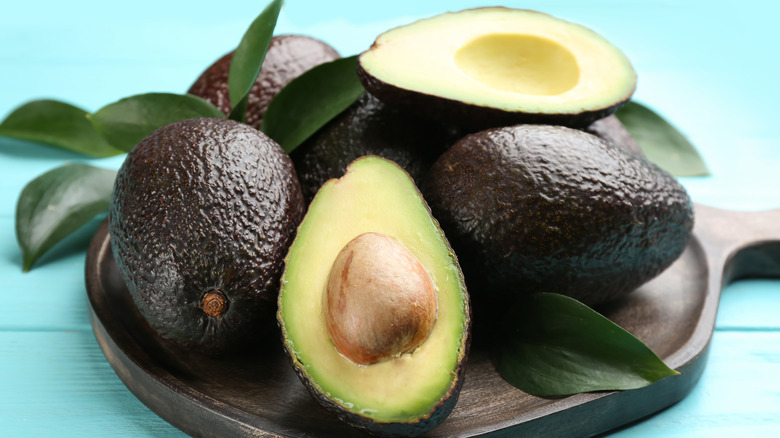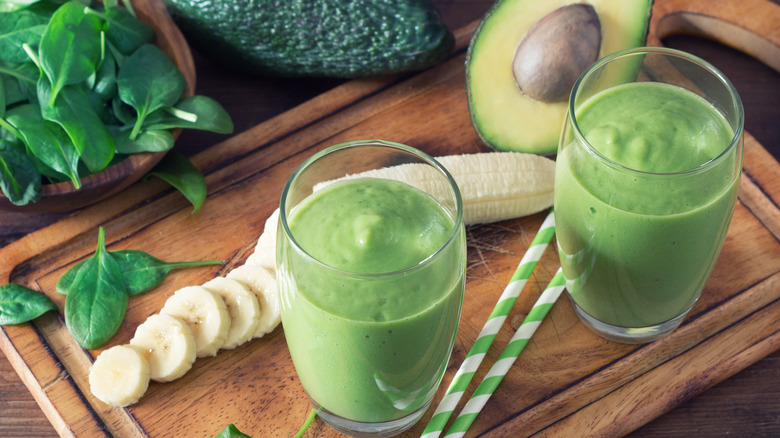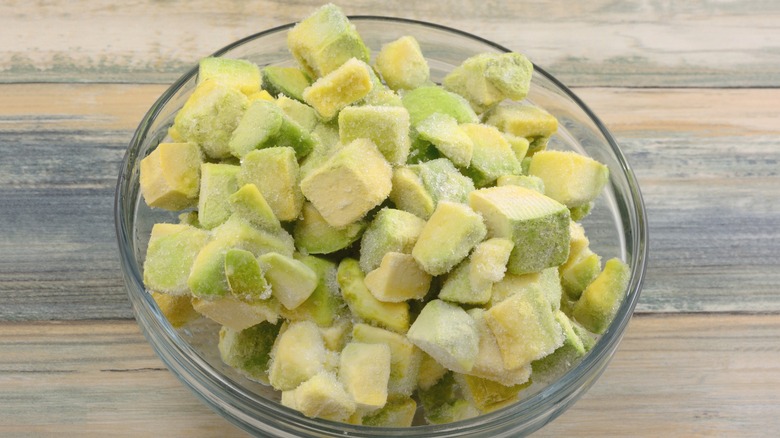Too Many Ripe Avocados? Freeze Them Whole For The Best Results
Avocados have the power to mess with our emotions unlike any other food. We're either basking in the joy of getting a perfectly ripe one or wallowing in the total letdown of cutting into one that's gone brown and slimy. Then there's the dilemma of having too many turn ripe at the same time, knowing you won't be able to eat them all before they go bad. That's a double whammy of sadness because not only do you miss out on enjoying their delicious, creamy goodness, but it's also a waste of money.
But it doesn't have to be this way — fresh avocados can actually be frozen to prevent them from spoiling. The easiest way to do this will also get you the best results — simply freeze them whole. Cold storage preserves them at their peak until you're ready to use them.
You should wait until they are just ripe to freeze them. Since avocados won't continue ripening once frozen or when thawed, the trick is to not do this too early or wait until it's too late. You can use the hidden avocado ripeness color code to get your timing just right. According to the FDA, avocados should be thoroughly washed and dried before you even cut into them to reduce the risk of food poisoning, so do this before you freeze them. Then wrap them in plastic, pop them into a freezer bag, and toss them into the freezer. Whole frozen avocados can last up to three months.
The best ways to use frozen ripe avocados
A frozen whole avocado will take from 30 minutes to an hour to thaw at room temperature. You will then be able to cut it open and use it as desired. It is important to note that freezing avocados changes their texture and appearance, so some uses for them will be more appropriate than others. Their consistency will be a bit mushy, and even though frozen uncut, their color may have a brown or gray cast.
For these reasons, using them sliced like a fresh avocado won't be ideal ... they won't have the same mouthfeel, nor will they look as pretty. The same goes for certain mashed preparations, like guacamole where you'll want nice green chunks, or avocado toast where the color changes may not look all that appetizing. You can, of course, use them for either of these as long as you don't mind the finished product looking a little drab.
Thawed avocados will still taste good though and are best used where their soft texture and appearance won't matter. They'll work well for most blended recipes — think sauces, dressings, and smoothies. They're great in pesto and hummus and are excellent for international dessert-style avocado milkshakes. Previously frozen avocados will also lend their signature creaminess to baked goods — where their slight sweetness comes through but does not take away from the flavor of the treats.
More methods for freezing avocados
There are other ways to freeze avocados too. They can be frozen sliced or in chunks — but be sure to give these a splash of lemon juice as soon as they are cut, as oxidation will set in quickly, and they will discolor. Lay the pieces out in a single layer on a lined baking sheet and freeze for about an hour before placing them into a freezer bag or container. The first freeze prevents the individual pieces from sticking together in one big mass after they are put in the bag for storage.
You can also mash up avocados for freezing. You'll want to use some lemon here too in order to preserve the color. Smash up the fruit's pulp, mix in the lemon juice, then scoop it all into a freezer bag. You should flatten the contents so that the bag can lay flat in your freezer and squeeze out the air before sealing so that it won't all turn brown (although some browning is to be expected).
Mashed-up avocado can also be put into ice cube trays, and then moved into a bag once frozen solid. These are suitable for when you only need small amounts at a time — or can be used still frozen for smoothies or other cold recipes — like avocado mint ice cream. Cut avocado will do okay in the freezer for about one month. To thaw, transfer it into the refrigerator overnight.



